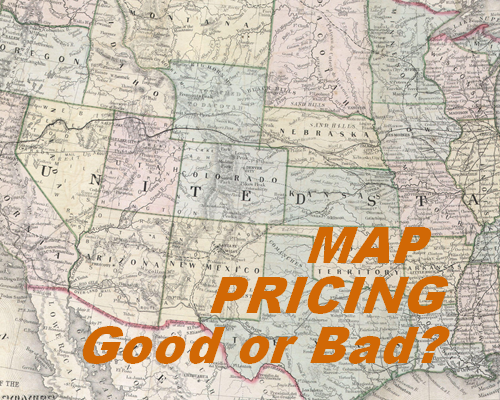What Good is a MAP Policy if the Manufacturers Break It?

MAP stands for “Minimum Advertised Price” and is a pricing policy used a lot in the automotive industry. It was thought of to even the playing field between those who sell a manufacturers products. So the “Big Boys” who may get huge discounts and the “Little Guy” who does not would be forced to sell the product for the same minimum price.
This policy would also insure that manufactures would not see their products become commodities in which the prices were always driven lower and lower to compete. The MAP system is a good idea in theory but in practice it is not so good. A standard policy will state the following:
- You cannot advertise a price above MAP on any print or online media.
- You cannot have deceptive practices like saying putting a MAP price up and saying to call for better pricing.
- You cannot advertise a MAP price and then have a lower price in the cart.
- You cannot use a coupon to lower the price below MAP
- You cannot put a black strike through the price nor can you add two products together and keep the price lower then the MAP of both products added together.
- In other words you can only list the MAP price.
The main PRO is that it will stabilize pricing and it forces everyone to advertise the same price, whether online, in print, or on eBay or Amazon. This make everyone selling a manufacturers products on a level playing field. Also it makes sure you maintain adequate margins. Especially if you negotiate better pricing.
The main CON is that everyone will be selling this product and you will sell less of it. Also you will be less motivated to offer it, or put these items on your website because the reward is not worth the effort. MARGINS ARE SLIM in the automotive industry. So you are always looking for a competitive advantage and MAP pricing is dangerously close to ruining that advantage. In the end we always are looking for manufacturers who have products that are not on MAP or manufacturing our own.
So in the very end, manufacturers who adopt a MAP policy are really just putting themselves in a dangerous position. They should let the free market and innovation reign with their products. If I am competing with someone with the same product I never compete on price. If you do that you will ultimately lose because working on slim margins will start to strangle your cash flow because one thing is certain is that fixed costs usually go up. And if you engage in a price war then margins only go down. What I compete with is learning what the customer wants from each product and adding value to it.
SO WHAT HAPPENS WHEN MAP IS NOT FOLLOWED BY THE MANUFACTURER?
Recently I was talking with a client who was penalized for not following a MAP policy and they were not allowed to sell the products any more until they came into compliance. So they went and changed all of their pricing, and low and behold, it was on Amazon that they made an egregious discovery. While changing all of their prices they found that the manufacture was also on Amazon selling direct with over 2700 listings, and guess what? Not one of those listings was at MAP they were almost all below MAP. So what is a retailer to do if they are stuck between a rock and a hard place?










